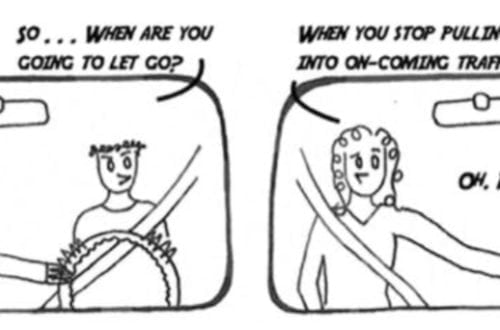
Five Creative Prompts to Keep Your Child Writing When School is Out
By Robin Estrin

Random Word Generator
Genre: Quick fiction
Materials: Online access to randomwordgenerator.com
Prompt: Using the website randomwordgenerator.com, populate a list of 10 colorful nouns, verbs or adjectives. Using the list as a word bank, give your child 10-15 minutes to write a short story using all of the words. You can increase the number of words (and minutes) for more advanced writers, and decrease the numbers for less experienced writers. Don’t have internet? Manually generate your random word list by moving your finger across the pages of your child’s favorite book.
Age range: Generative for writers of all ages, this prompt is perfect for children who have difficulty “knowing what to write.”
How Bizarre!
Genre: Surreal Fiction
Materials: PDF of Franz Kafka’s “The Metamorphosis”
Prompt: In Franz Kafka’s seminal novella, protagonist Gregor Samsa wakes up to find himself transformed into a cockroach. Ask your child to think of an everyday task: brushing teeth, eating breakfast, readying for school, then imagine what how that task would be complicated if they introduced an element of the surreal. For example, what if you went to brush your teeth and orange juice came out of the faucet, or you walked downstairs for breakfast and saw that your family members had been re- placed by computers?
Age range: This prompt asks students to stretch their imaginations. Ideal for writers aged 9-14.
Love Letter to an Inanimate Object
Genre: Poetry
Materials: Online access to Sarah Kaye’s love letter from a toothbrush to a bicycle tire
Prompt: What would an apple say to candy bar if the two met in the checkout line at the grocery store? Would it be an easy relationship, or a tale of forbidden love? in “Toothbrush to the Bicycle Tire,” Sarah Kaye personifies two unlikely suspects to write a poem that gets at the essence of what it means to be in love.
In this activity, students write odes from one inanimate object to another. The exercise targets skill-building in figurative language: personification, simile, and metaphor. Encourage your child to be creative when picking their inanimate objects, and to make a list of their most recognizable uses and qualities. This will become a word bank, of sorts, for students to use while writing their own poems.
Hint: there are some lines in this poem that are okay to “borrow,” so long as the original author is credited. “They told me…” “But I know better.” “If loving you means…”
Age range: Best for students aged 9- 14.
What’s in Your Bag?
Genre: Creative Nonfiction
Materials: Any type of bag (purse, backpack, sports bag, etc.)
Prompt: When developing yourself as a character for a story, the things that you carry on your body can tell a reader as much about you as your emotional and physical traits. In this prompt, ask your child to look through their bag and write about what they are carrying with them. If they start by making a list, that’s fine, but encourage them to think about what the things they have say about who they are as a person. Go deeper. The prompt can be altered to what’s in your bedroom, on your desk, or around your wrist?
Age range: This reflective prompt is optimal for writers of all ages, adults included.
World Building
Genre: Fantasy
Materials: Text from Julie Andrews Edwards’ novel, The Last of the Really Great Whangdoodles, Chapter 4
Prompt: The actress who brought us Mary Poppins wrote a fantastically imagined novel for middle grade readers, in which three siblings adventure through the far-off Whangdoodleland. In one particular passage, the Potter siblings, their nutty tour guide, and a boisterous yet shy creature known as the “Whiffle Bird,” travel by boat down a winding river. It is from this vantage point that the children see the fantastical landscape of Whangdoodleland, and its inhabitants, for the first time. Read the chapter aloud to your child, then ask them to pick a mode of transportation: train, horseback, spaceship, etc. and write about a character’s travels through a made-up land. Encourage detail! What do they see, hear, smell, witness; and who, or what, do they meet?
Age range: Students aged 6-14.


You May Also Like

Secrets of a Driving Instructor
July 30, 2018
Many Iconic Rides Built by Former Local Company: Always Amused 2018
July 30, 2018

